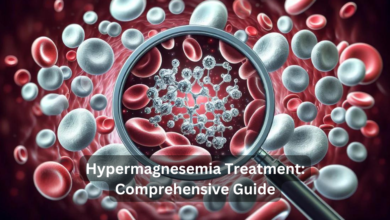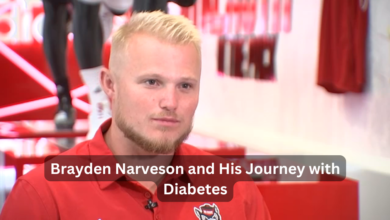5 Ways to Control Diabetes Naturally
What is the best way to control diabetes?
There is no one-size-fits-all answer to this question, as the best way to control diabetes will vary depending on the individual’s individual needs and circumstances. However, there are a number of general tips that can help people with diabetes manage their condition and keep their blood sugar levels under control. These include:
- Following a healthy diet that is low in sugar and processed carbohydrates and high in fiber
- Getting regular exercise
- Managing stress
- Taking medication, if necessary
- Monitoring blood sugar levels regularly
By following these tips, people with diabetes can improve their overall health and well-being and reduce their risk of developing serious complications.
II. Symptoms of Diabetes
The symptoms of diabetes can vary depending on the type of diabetes you have. Some of the most common symptoms of type 1 diabetes include:
- Frequent urination
- Thirst
- Increased hunger
- Weight loss
- Blurred vision
- Fatigue
- Nausea
- Yeast infections
The symptoms of type 2 diabetes are often more subtle and may not appear until the disease has progressed. Some of the most common symptoms of type 2 diabetes include:
- Increased thirst
- Frequent urination
- Fatigue
- Blurred vision
- Slow healing
- Numbness or tingling in the hands or feet
- Painful or frequent urination
- Skin infections
If you have any of these symptoms, it is important to see your doctor for a diagnosis.
III. Causes of Diabetes
There are many different causes of diabetes, but the most common type is type 2 diabetes. Type 2 diabetes is caused by a combination of genetic and environmental factors. Some of the risk factors for type 2 diabetes include:
- Being overweight or obese
- Having a family history of diabetes
- Being physically inactive
- Having high blood pressure
- Having high cholesterol
- Having a history of gestational diabetes
Type 1 diabetes is less common than type 2 diabetes. It is caused by an autoimmune reaction that destroys the insulin-producing cells in the pancreas. The exact cause of type 1 diabetes is unknown, but it is thought to be caused by a combination of genetic and environmental factors.
Other types of diabetes include gestational diabetes, which occurs during pregnancy, and monogenic diabetes, which is caused by a single gene mutation.
4. Treatment of Diabetes
There are a variety of treatments available for diabetes, depending on the type of diabetes and the severity of the condition. Some of the most common treatments include:
- Medications
- Diet and exercise
- Insulin therapy
- Lifestyle changes
Medications can help to control blood sugar levels and prevent complications. There are a variety of different types of medications available, including oral medications and injectable medications.
Diet and exercise are also important components of diabetes management. A healthy diet can help to control blood sugar levels and weight, while exercise can help to improve insulin sensitivity.
Insulin therapy is a treatment option for people with type 1 diabetes. Insulin is a hormone that helps the body to use glucose for energy. People with type 1 diabetes need to take insulin injections to survive.
Lifestyle changes can also help to manage diabetes. These changes include quitting smoking, eating a healthy diet, and getting regular exercise.
By following a treatment plan, people with diabetes can manage their condition and prevent complications.
V. Diagnosis of Diabetes
Diabetes is diagnosed with a blood test that measures your blood sugar level. A fasting blood sugar level of 126 mg/dL or higher, or a blood sugar level of 200 mg/dL or higher two hours after eating, indicates diabetes.
If you are diagnosed with diabetes, your doctor will recommend a treatment plan that includes diet, exercise, and medication.
You will also need to have regular blood tests to monitor your blood sugar levels and your A1c level. The A1c level is a measure of your average blood sugar level over the past three months.
Keeping your blood sugar levels under control is important to prevent complications of diabetes, such as heart disease, stroke, kidney disease, and blindness.
VI. Treatment of Diabetes
There are a variety of treatments available for diabetes, depending on the type of diabetes and the individual’s needs. Treatment options may include medication, diet and exercise, and lifestyle changes.
Medications for diabetes can help to control blood sugar levels and prevent complications. There are a number of different types of diabetes medications available, including:
- Insulin
- Oral hypoglycemic agents
- GLP-1 agonists
- SGLT-2 inhibitors
Diet and exercise are also important parts of diabetes management. A healthy diet can help to control blood sugar levels and maintain a healthy weight. Exercise can help to improve insulin sensitivity and lower blood sugar levels.
Lifestyle changes can also help to manage diabetes. These changes may include:
- Quitting smoking
- Managing stress
- Getting enough sleep
- Avoiding alcohol
By following a treatment plan that includes medication, diet, exercise, and lifestyle changes, people with diabetes can manage their condition and prevent complications.
VII. Complications of Diabetes
Diabetes can lead to a number of complications, including:
- Heart disease
- Stroke
- Kidney disease
- Eye disease
- Nerve damage
- Foot problems
- Skin problems
- Oral health problems
These complications can be serious and even life-threatening, so it is important to take steps to control your diabetes and prevent complications from developing.
Prevention of Diabetes
VIII. Prevention of Diabetes
There is no sure way to prevent type 1 diabetes, but there are some things you can do to reduce your risk. These include:
- Maintaining a healthy weight
- Getting regular exercise
- Eating a healthy diet
- Not smoking
- Limiting alcohol intake
If you have a family history of type 1 diabetes, you may be at an increased risk of developing the disease. Talk to your doctor about your risk factors and what you can do to reduce them.
There are also some things you can do to help prevent type 2 diabetes. These include:
- Maintaining a healthy weight
- Getting regular exercise
- Eating a healthy diet
- Not smoking
- Limiting alcohol intake
- Taking medication to lower your blood sugar if you are at high risk of developing type 2 diabetes
If you have any concerns about your risk of developing diabetes, talk to your doctor.
IX. Resources for Diabetes
Here are some resources that you may find helpful in managing your diabetes:
- CDC’s Diabetes Management Guidelines
- NIH’s Diabetes Management Information
- American Diabetes Association’s Diabetes Management Resources
You can also find helpful information and support from your doctor, diabetes educator, or other healthcare professionals.

